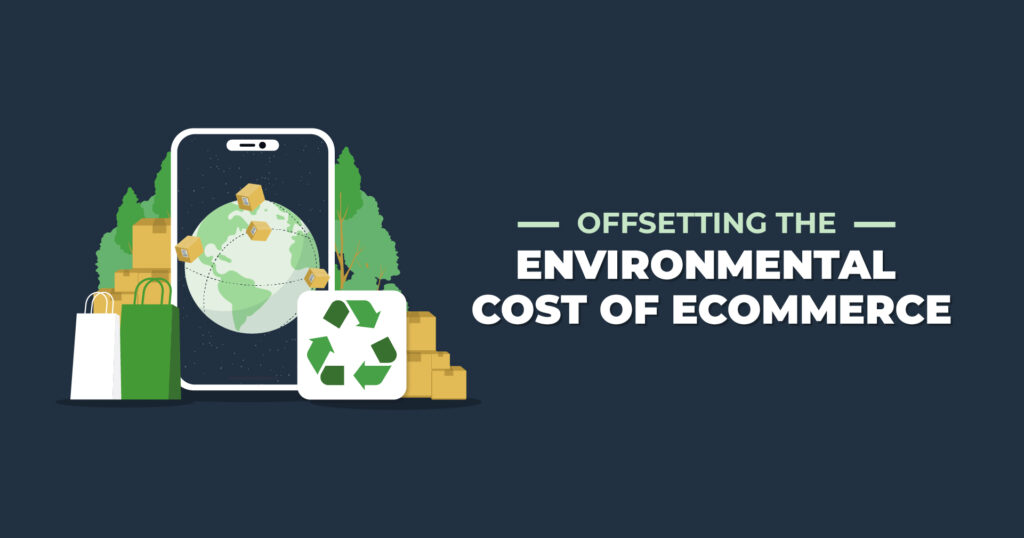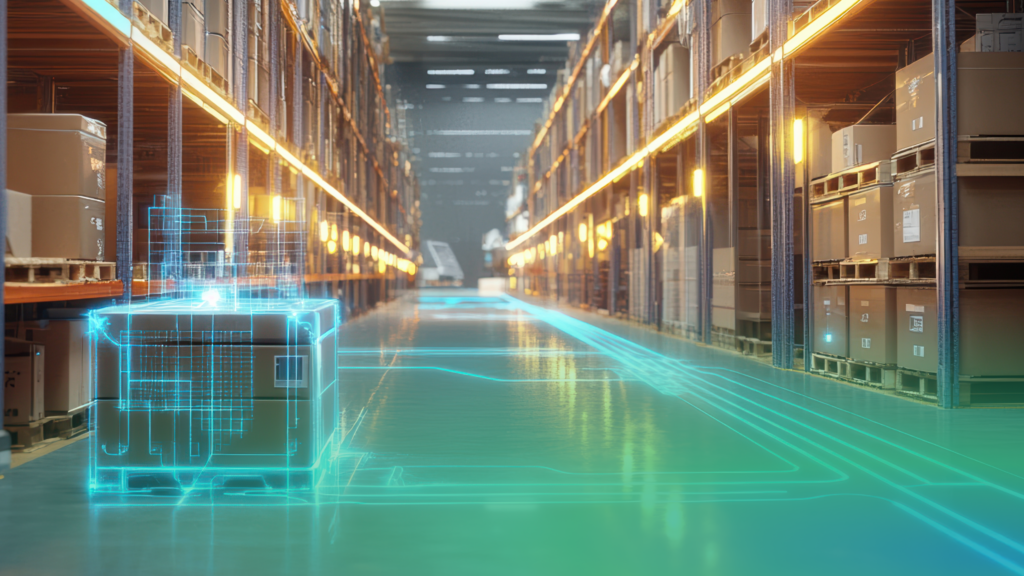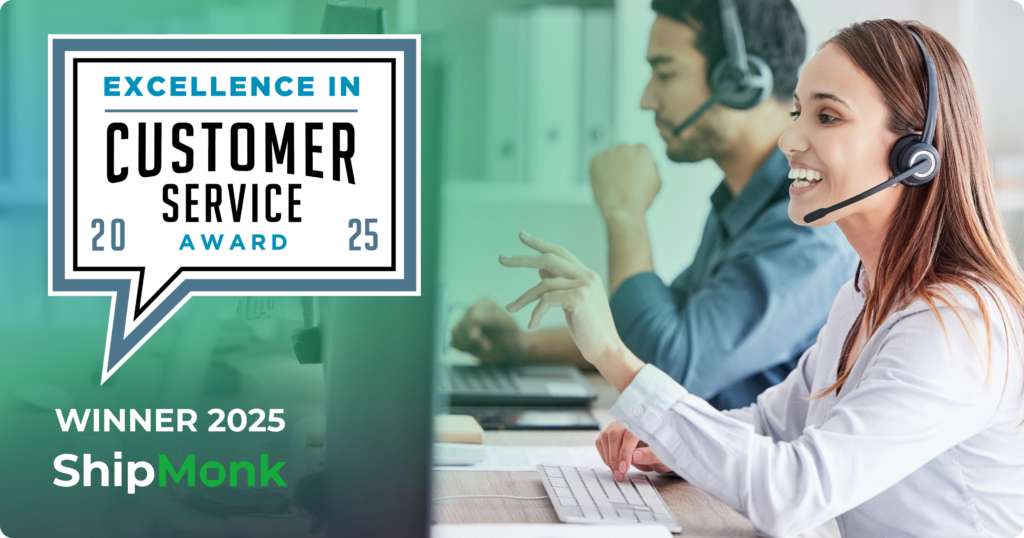Back in the early 2000s, when gas prices were climbing to never-before-seen heights, ecommerce was billed as eco-friendly when compared to millions of people driving around to multiple stores to do their shopping. There may have been some truth to the claim back then, but given the number of delivery trucks driving down my street every day, I’d say this is no longer the case.
The promise of unlimited, same-day, or next-day deliveries for one low price was introduced as Amazon Prime in 2005, and every retailer on the planet frantically scrambled to adjust their pricing strategy and offer free shipping, 2-day shipping, or some combination thereof. Now, rather than having everything we need delivered in one big order, we think nothing of placing multiple orders per week for whatever we happen to need at the moment. After all, it saves us so much time, and it’s practically free!
Meanwhile, the environmental costs are piling up (literally) in carbon emissions, packaging waste, and unsalable merchandise. As a third-party fulfillment provider that services hundreds of ecommerce businesses, we are admittedly part of the problem but we can also be part of the solution. Today we’re going to discuss what we can (and must!) do to help reduce the environmental costs of ecommerce.
What are the Environmental Costs of Ecommerce?
Calculating the actual environmental cost of delivering a single ecommerce order wouldn’t be all that difficult if it weren’t for the fact that every order is different. Yet most ecommerce products take a similar path from manufacturing to final delivery. To calculate the environmental cost of each order, we would have to measure the following:
- Energy and water consumed in the manufacturing, storage, and disposal of products
- C02 emissions in the transport of products inbound to a fulfillment center and outbound to customers
- Byproducts of the manufacturing process that pollute or end up in landfills
- Waste created from packaging, returns, and dead stock
Granted, many of these costs are not unique to ecommerce, but are shared by the entire consumer goods industry. We can only focus on our part in it. So, if you’d like an exact measurement of every CO2 molecule your business emits, there are companies, like Greenly, that have the proper tools to measure this for you. But that’s not us. Our expertise, as a logistics and fulfillment provider, is in streamlining the process, making it more efficient, and eliminating waste. Let’s look at the areas where ecommerce businesses and their partners can make a difference.
Products
What does your ecommerce business sell? Are you manufacturing it here, or somewhere far, far away? Could your manufacturing process be more eco-friendly? Could you be using more sustainable or locally sourced materials and facilities? Fast fashion has gotten a lot of attention lately as it causes tons of waste. Is your business part of the problem, or part of the solution?
Inbound Freight
How does your ecommerce business transport the finished goods to your warehouse or fulfillment center? Consider the fact that the shorter the distance and the slower it travels, the more energy efficient freight transport becomes. Air freight emits eight times more carbon dioxide than ground freight and 47 times more than a cargo ship, to transport the same load over the same distance. If you’re importing goods from overseas, build enough lead time into your supply chain to use an eco-friendlier mode of transportation.
Storage and Fulfillment
Warehousing is a necessary part of the ecommerce fulfillment process, but a cavernous warehouse takes a lot of energy to heat, cool, and maintain. Therefore, the more products stored and orders processed in that warehouse, the more energy efficient it becomes, and the lower the environmental cost per order. The most efficient 3PL fulfillment providers can process tens of thousands of orders per day. If your 3PL offers multiple fulfillment center locations, connected via the same order and inventory management software, it’s even easier to monitor and optimize systems for efficiency. Plus, you can distribute your inventory across the country to reduce shipping distances and carbon emissions on each order. Ask your 3PL what else they’re doing to conserve energy!
Packaging
When climate-change experts point to ecommerce as being part of the problem, they’re usually referring to the two largest environmental costs of ecommerce: packaging and shipping. Let’s talk about packaging first.
Most products sold in America come already packaged from the manufacturer, and are shipped in bulk to retail stores to be put on shelves for sale. At checkout, the buyer can choose paper or plastic, or no bag at all. With ecommerce, the customer doesn’t get a choice. Their order comes re-packaged in a sturdy box or mailer, surrounded by packing materials to prevent damage during the shipping process. The customer then has to recycle, reuse, or dispose of this extra packaging. What can we do to reduce the environmental effects of ecommerce packaging? Here are a few ideas.
- Avoid single-use packing materials, such as bubble wrap and Styrofoam, and include your manufacturer and fulfillment provider in the discussion. Can they offer an eco-friendly yet water-resistant alternative to the omnipresent polybag and bubble wrap? If they must use plastic, can they source bags that are recyclable, and/or packaging made from recycled plastic?
- If your products come already packaged in boxes from the manufacturer, could they safely be shipped without the need for an exterior shipping box? If the packaging is sturdy enough to protect the contents, all your fulfillment center really needs is a place to stick the shipping label.
- Ask your 3PL or fulfillment provider about sustainable packaging and packing materials. By sustainable we mean either biodegradable or recyclable. New biodegradable packing materials are being developed every day, including compostable bags, edible films, air pillows made from recycled materials, and molded packaging made from seaweed or mushrooms.
- Technically, sustainable packaging also includes recycled materials such as PET and HDPE plastics, as well as bioplastics, which are part plant-based, part petroleum-based. But plastic is plastic. If you want to go plastic free, none of these are good options. And if you absolutely need to use plastic, recycled plastic is better than bioplastic. While bioplastics do break down faster, the resulting waste is neither recyclable, nor usable as compost. Many bioplastics break down into microplastics which are even worse for the environment.
- Give your customers the option at checkout to consolidate items originating from more than one location into one package for last-mile delivery.
- Make sure your 3PL is using the smallest box or mailer possible, to make every truckload more efficient.
- Go with digital invoices, receipts, packing slips and return labels, rather than paper or non-recyclable labels.
- Encourage customers to reuse the packaging they get from you, and ship returns in the same packaging.
Remember, you and your partners (manufacturers, suppliers, and fulfillment provider) are in this together. Ask them what they can do to help your business grow greener. Sustainable, plastic-free packaging branded with your logo is a great way to show your customers that you care about the environment.
Shipping
Having products shipped to your door without having to lift more than a finger is kind of key to the whole ecommerce experience – it’s what puts the e in ecommerce. So, if we can’t avoid shipping, what can we do to reduce its impact? Here are a few good places to start.
- Distribute your inventory to reduce shipping distances and carbon emissions. If shipping internationally, find a global 3PL that can store your inventory and fulfill orders in Europe or the United Kingdom, to dramatically reduce shipping distances.
- Seek out carriers that have invested in electric vehicles. A 3PL that can distribute your inventory closer to major markets might be able to help you find a local or regional carrier that utilizes electric vehicles for last-mile delivery.
- Seek out a 3PL that utilizes a carrier-agnostic, route-optimization system to find the best, most efficient shipping method for each stage of the delivery.
- Offset the carbon your deliveries produce by purchasing carbon credits or investing in a carbon offsetting project, to create a net-zero effect on the environment.
- Reduce the carbon you create by offering your customers the option to consolidate deliveries, and an incentive to choose a slower shipping method, such as free shipping. At the same time, let customers know why you’re offering a slower option, and that by choosing this option they are helping the environment.
Waste
Anything that ends up in a landfill is considered waste. This includes single-use plastics like polybags, returns you can’t recycle or resell, perishable products that have expired, and dead stock you can’t sell and probably shouldn’t have ordered in the first place.
- Improve demand forecasting with better systems that utilize AI or machine learning to avoid overstocks.
- Find a 3PL that can handle omnichannel ecommerce, so you know exactly how much inventory you have and where it’s located at any given time.
- Explore ways to reduce returns.
- Invest in a returns management system or partner to make sure you’re recouping as much value as you can out of your returns.
- Recycle, liquidate or donate returns and overstock that you can’t sell. Yes, it takes more effort than disposal, but it’s better for everyone.
Make Your Business Sustainable
Consumers appreciate brands that are actively trying to reduce their carbon footprint. As we’ve seen, there are plenty of things you can do to make your business more sustainable and earn their loyalty. You can commit to using sustainable materials and packaging. You can invest in systems that more accurately manage inventory and reduce waste. You can enable and encourage customers to return merchandise in the same packaging it was shipped in. And you can partner with manufacturers and fulfillment providers that care as much as you do about sustaining our future in ecommerce. Contact ShipMonk to get started!





